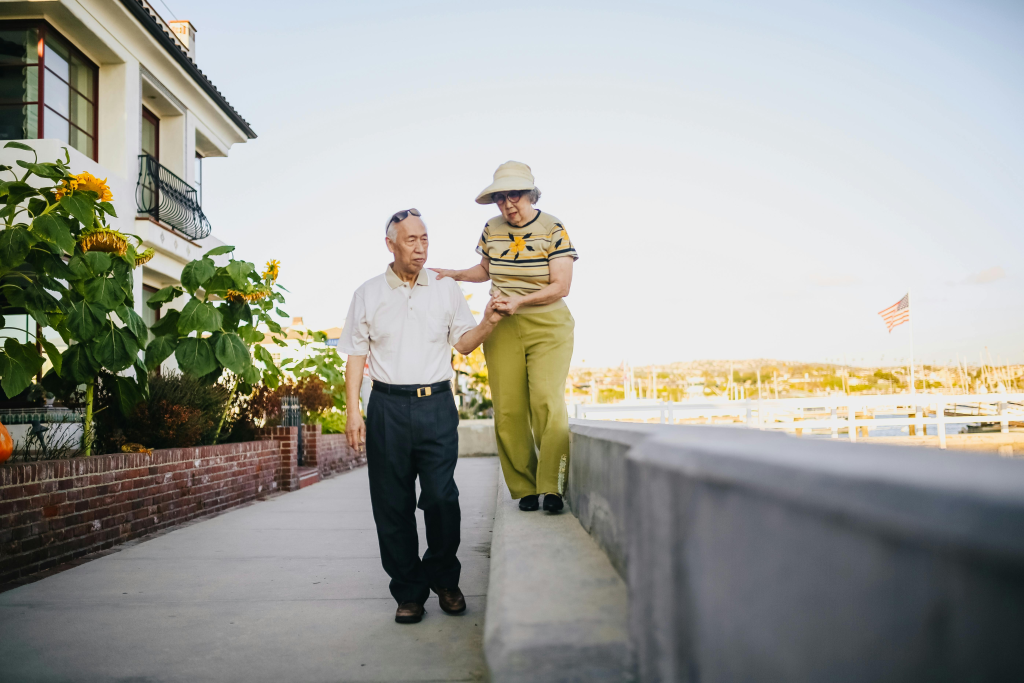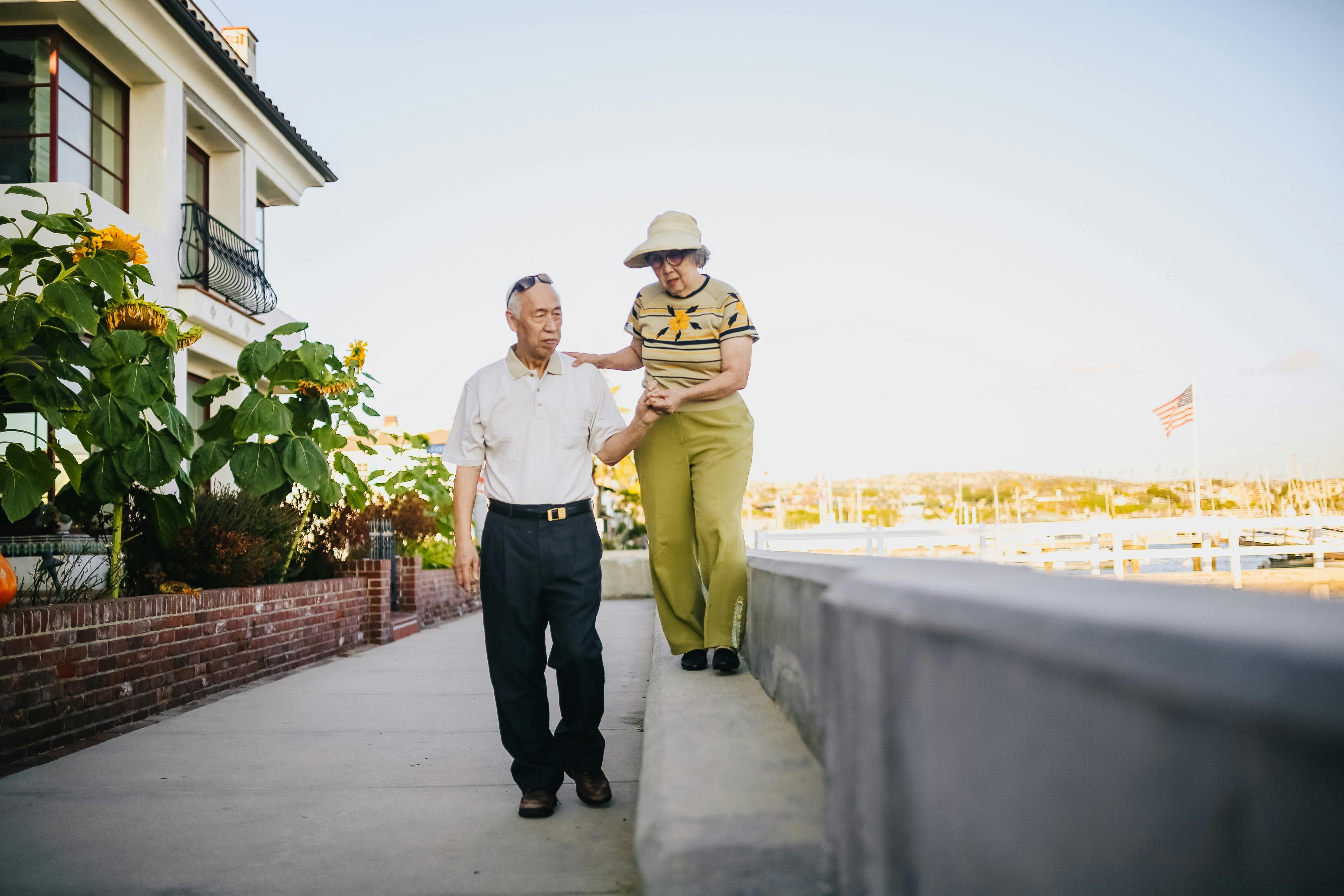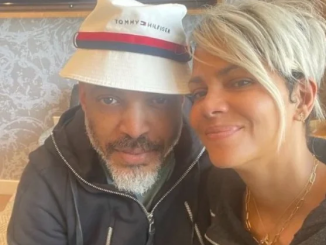Brenda Lee’s name may not be as recognizable as some of the other music stars from the 1960s but when you think of Christmas, you’ll know her song, and start humming her catchy tune, “Rockin’ Around the Christmas Tree.”
When Lee, now 78, first hit the stage, she wasn’t old enough to drive but her powerful vocals steered her “unprecedented international popularity” as the most successful female artist of the 1960s.
Lee, whose voice defied her diminutive stature at only 4 foot 9, became a fan favorite when she was only 12.
Brenda May Tarpley, born in 1944, got her start in the late 1940s, became huge in the 1950s, and over her career–that started before she left elementary school–she topped the charts 55 times, earning the title as the most successful female recording artist of the 1960s.
When Lee was only eight (according to Rolling Stone), her father, a construction worker, was killed at work and little Brenda–who then changed her last name to Lee–became the family’s primary provider.

Taking care of her younger brother, big sister, and mother–a cotton mill worker–was not a duty, but something she wanted to do. She said that she was thrilled when she made her first $20, so she could help her family: “Even at that young age, I saw that helped our life,” Lee said, adding “It put some food on the table. It helped, and I loved it.”
The Atlanta-born chanteuse, called a “pioneer of early rock and roll,” by the Georgia Encyclopedia, achieved “unprecedented international popularity in the 1960s.”
But, an incredibly humble human, Lee credits those who helped her achieve her dreams. When Christianity Today asked what she thinks about being a legend, Lee said “I don’t think of myself that way!” She continued, “I’m just a girl who’s been blessed to be doing what I’m doing, and there’s a lot of people who’ve sweated a lot of tears and put a lot of life’s work into me to be able to have my dream. So, if I’m a legend, then they’re legends, too.”
In 1956, the young girl joined country star Red Foley for a show at the Bell Auditorium near her home in Augusta, and she belted out “Jambalaya,” by Hank Williams.

She was then signed to appear on Foley’s Ozark Jubilee, a country music show, where millions of viewers fell in love with the sassy 12-year-old whose talent was developed well beyond her age.
In the same year, Lee signed with Decca Records, and the next year, she moved to Nashville, Tennessee, and fusing country with rhythm and blues–highlighted by her hiccupping vocals–she recorded early rockabilly classics like “BIGELOW 6-200,” “Little Jonah,” and “Let’s Jump the Broomstick.”
When asked if–when as a young girl–she was nervous performing in front of large crowds, she answered: “No, not really. Nobody ever told me to be nervous. The stage always felt like a hometown to me because I had been in front of people ever since I was 3 years old, singing to people. So it was a very comfortable spot for me.”
In 1957, Lee earned the nickname “Little Miss Dynamite” for her pint-sized powerhouse recording of the song “Dynamite,” and in 1958, fans heard “Rockin’ around the Christmas Tree,” a genre and generation-crossing holiday standard, released when she was only 13.
“I knew it was magical,” she told Rolling Stone.
Over the next couple of years, she charted with hits like “Sweet Nuthin’s,” “All Alone Am I,” and “Fool #1.”
Most of her songs, however, contradicted her experience as a young girl. Her mother didn’t let her date and she graduated high school not understanding the heartbreak of young love.

She was only 16 when she said “Love could be so cruel” in the song “I’m Sorry” and only 16 when she said “I want his lips to kiss me” in the song “I Want to be Wanted,” both back-to-back hits when she was still in school.
And when she turned 18, she met Ronnie Shacklett, whom she’s now been happily married to for 60 years.
Life on the road for Lee as a youngster had its difficulties. She celebrated her 12th birthday in Las Vegas and speaking with the Las Vegas Journal, Lee explained her loneliness.
“Of course, I wasn’t even allowed to walk through a casino, I was so young. So I didn’t even know what a casino looked like. They took me into the kitchen, then into the showroom. And then when my show was over, I was brought back out through the kitchen and back up to my room. Children weren’t allowed … in the casino area.” She continued, “There wasn’t anything to do in Vegas for a kid. The most fun I had was on the stage.”
Speaking on what she missed out on as a child, the award-winning Lee said, “Many times, I yearned to be with my friends rather than be out there on the road.”
Turns out she made new friends on the road, like with the music group that opened for her at a 1962 show in Germany. “I hung out with John,” she says effortlessly, speaking of John Lennon. “He was extremely intelligent, very acerbic with his jokes, just a gentle person. When I found out that they later said they were fans of my music, I was just floored.”

My Grandpa with Alzheimer’s Couldn’t Remember Anyone except One Woman – He Proposed to Her before Our Whole Family

Do you believe in moments of pure magic, even amidst the harshest realities? Picture this: a man lost to Alzheimer’s, suddenly proposing to the love of his life, leaving everyone around in tears. This heartwarming story of my Grandpa Jim is one you won’t forget.

Man sitting on a bench in a park | Source: Pexels
Grandpa Jim has always been the sweetest man. He would tell the best stories, always had a smile on his face, and was the heart of our family. Watching him get diagnosed with Alzheimer’s and become forgetful has been incredibly hard for all of us.
It’s heartbreaking to see the man who once knew everything about us struggle to remember our names or where he is. Growing up, Grandpa Jim was my hero. He was a tall, robust man with a booming laugh that could fill a room.

Senior man giving hi five to a friend | Source: Pexels
Every summer, our family would gather around the campfire in the backyard, and grandpa would spin the most enchanting tales. One night, as the fire crackled and the stars twinkled above us, he told us about his adventures traveling across the country in his youth.
“There was this one time,” he said, his eyes twinkling with mischief, “I hitchhiked all the way to California just to see the Pacific Ocean. Best decision I ever made, aside from marrying your grandma.”

Grandfather bonding with his grandchildren | Source: Pexels
Grandpa Jim’s stories were always the highlight of our family gatherings. He had a way of bringing the past to life, making us feel like we were right there with him, experiencing every twist and turn.
But those days feel like a lifetime ago now. These days, grandpa is a shadow of his former self. The disease has taken so much from him, from all of us. One evening, I overheard my mom talking to Aunt Linda in the kitchen.

Two women standing in the kitchen | Source: Pexels
“I just don’t know what to do anymore,” she said, her voice breaking. “Sometimes he doesn’t even recognize me. It’s like he’s slipping away, piece by piece.”
“Remember what Dr. Patel said,” Aunt Linda replied gently. “We have to cherish the good days, the moments when he’s still with us, even if they’re fleeting.”
I tried to hold on to those words, but it was hard. I missed the grandpa who would wink at me during dinner and sneak me extra dessert. Now, he often looked at me with vacant eyes, trying to place my face.

Elderly man sitting on the bed | Source: Pexels
A few weeks ago, we decided to throw a BBQ party in our backyard to celebrate grandpa’s birthday. It was a rare warm day in early spring, and we wanted to make it special. Dad fired up the grill, and the smell of burgers and hot dogs filled the air.
Mom set up a long table with grandpa’s favorite dishes, hoping the familiar flavors might spark a memory. As we gathered around, gifting him things and flowers, we all tried to keep the mood light, even though the sadness was palpable.

People eating together | Source: Pexels
My little cousin, Tommy, ran up to grandpa with a handmade card, his eyes bright with excitement. “Happy birthday, grandpa!” he shouted, holding up his masterpiece.
Grandpa Jim smiled, but there was a flicker of confusion in his eyes. “Thank you, young man,” he said, patting Tommy’s head. “And what’s your name?”
Tommy’s face fell, but he quickly recovered. “I’m Tommy, grandpa. Your grandson.”

Young boy sitting on his grandfather’s lap | Source: Pexels
The air was heavy with an unspoken sadness, but we pushed on, determined to make it a day to remember. Grandma Mary, who has been tirelessly taking care of grandpa, emerged from the kitchen carrying a tray of food to the backyard. As she stepped out, her eyes met grandpa’s, and for a moment, everything changed.
Grandpa suddenly went quiet. This wasn’t unusual; he often forgot her name too. But this time was different. His eyes seemed to clear, and he picked up the bouquet that he received for his birthday and walked towards grandma.

Senior man giving flowers to his wife | Source: Pexels
Everyone gasped as we watched him get down on one knee. With tears in his eyes and a sincere expression, he said, “You are the most wonderful woman I have ever seen, and I would love for you to be my wife.”
I could see mom’s hands trembling as she brought them to her mouth, tears already streaming down her face. Aunt Linda clutched dad’s arm, her eyes wide in disbelief. The rest of the family fell silent, holding their breaths, watching this unexpected and heartwarming moment unfold.

Happy elderly couple | Source: Pexels
Grandma, who has been so strong and patient throughout his illness, melted in that moment. She softly replied, “Oh, Jim, we have been married for forty years. I am already your wife.”
For a brief second, there was a flicker of confusion on Grandpa Jim’s face, but it quickly passed. “Forty years?” he whispered as if trying to grasp the weight of that number. “Forty years with you, and it still feels like yesterday.”
She knelt beside him, taking his hands in hers. “Yes, my love. Forty beautiful years.”

Elderly couple walking | Source: Pexels
I could feel a lump forming in my throat. This was the grandpa I remembered, the man who adored grandma more than anything in the world. It was like watching a scene from one of his old stories, but this time it was real, and it was happening right in front of us.
Mom stepped forward, her voice shaking. “Dad, do you remember our family vacations? You and mom would always dance on the beach at sunset.”

Couple dancing on the beach | Source: Pexels
Grandpa’s eyes flickered with a distant memory. “Yes, the sunsets,” he murmured, his gaze still locked on grandma. “You always looked so beautiful in that light.”
I remembered those vacations too. Grandpa and grandma dancing barefoot in the sand, completely lost in each other. They seemed invincible back then like their love could withstand anything. And now, even with Alzheimer’s stealing so much from him, that love shone through.

Couple having a romantic moment at the beach | Source: Pexels
Tommy, ever curious and innocent, tugged at my sleeve. “Why is grandpa asking grandma to marry him again?”
I knelt at his level, trying to find the right words. “Sometimes, Tommy, love is so strong that it finds its way back, even when memories fade.”
Grandma wiped a tear from her cheek and kissed grandpa’s forehead. “You always were a charmer, Jim. You swept me off my feet then, and you still do now.”

Elderly man kissing his wife | Source: Pexels
Dad cleared his throat, trying to keep his composure. “Let’s get you both up,” he said gently, helping them stand. “We have a lot of celebrating to do.”
As the family gathered around, enveloping grandpa and grandma in a tight embrace, I felt a sense of warmth and unity. Even in the face of this cruel disease, the love they shared was a beacon of hope for all of us.

Elderly couple on concrete bench taking a selfie | Source: Pexels
Grandpa’s grip on reality might be slipping, but at that moment, he was the man we all remembered: strong, loving, and full of life. And grandma, with her unwavering strength and patience, was the anchor that kept him grounded.
Later that evening, as the sun began to set, we all sat around the table, sharing stories and laughter. Grandpa, sitting beside grandma, seemed more present than he had in a long time. He listened intently, his hand never leaving hers.

Family having a celebration | Source: Pexels
I watched them, feeling a mix of sadness and gratitude. Alzheimer’s might take away his memories, but it could never erase the love that had built our family. That day, we were reminded of the power of that love, and it gave us the strength to face whatever came next.
As I looked at my grandparents, their fingers intertwined, I couldn’t help but think of one of grandpa’s favorite sayings: “True love is like a lighthouse, it doesn’t move, it stands tall, guiding you through the darkest of storms.” At that moment, I understood exactly what he meant.

Elderly couple having a romantic moment | Source: Pexels



Leave a Reply